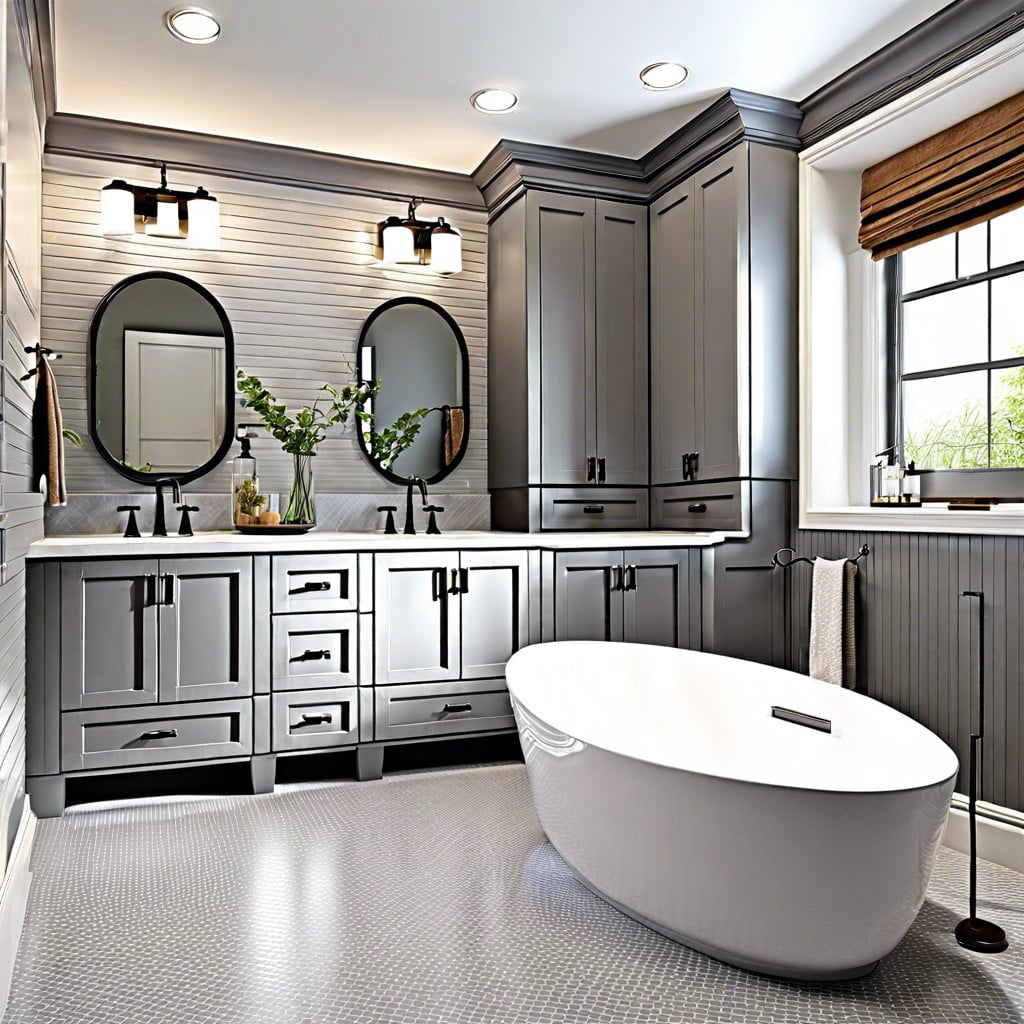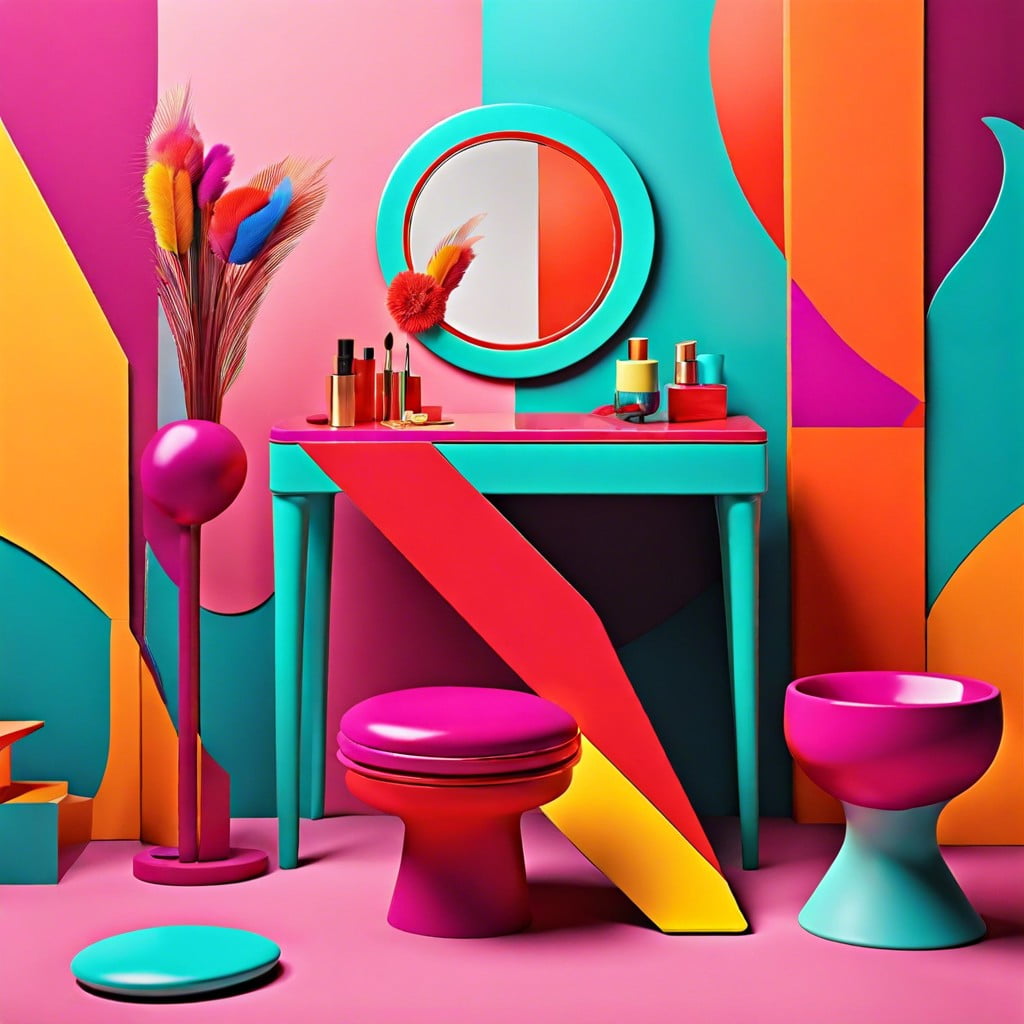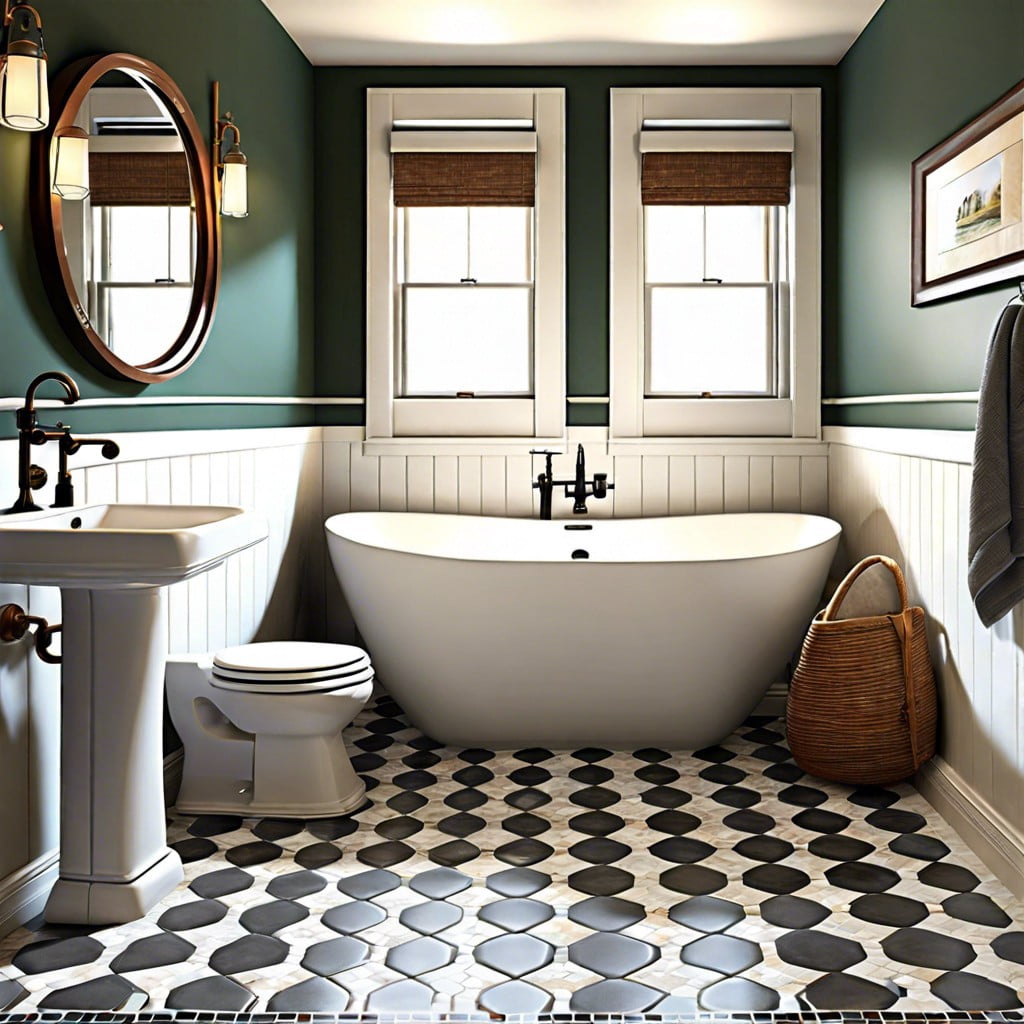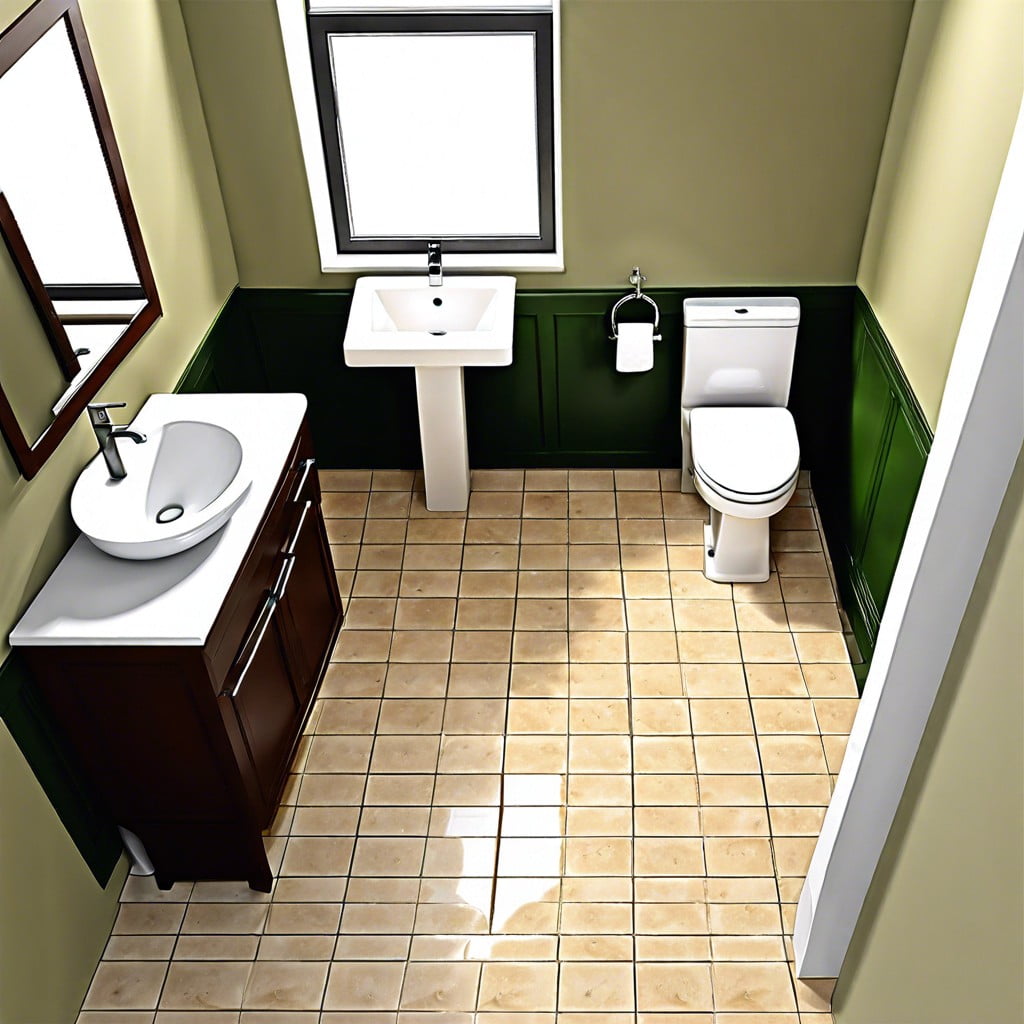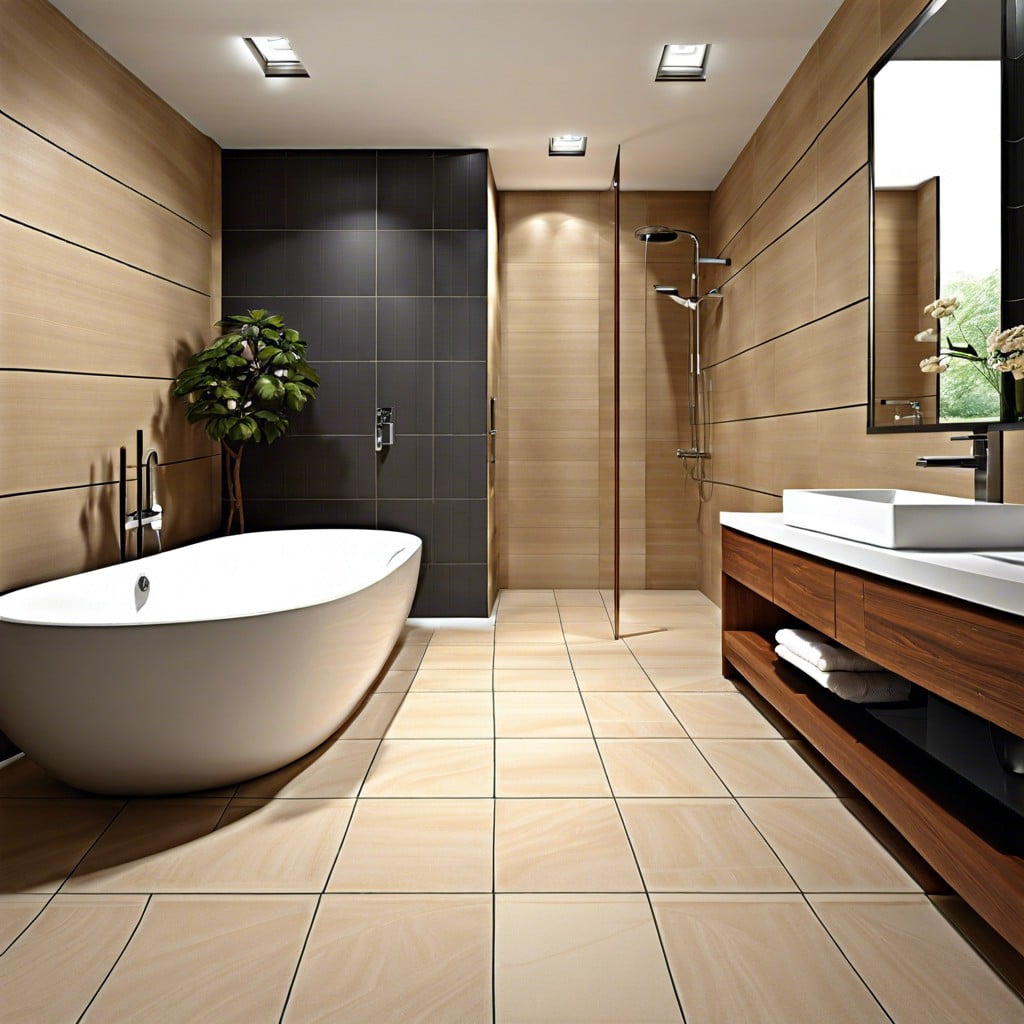Last updated on
This article provides a comprehensive comparative analysis of various paint finishes for bathrooms, presenting the advantages and disadvantages to aid in selecting the optimal choice.
Key takeaways:
- Semi-gloss and satin are recommended for bathroom paint finishes.
- Flat or matte paints are not ideal for bathrooms.
- High-gloss or semi-gloss finishes resist mold and mildew.
- Semi-gloss or high-gloss finishes prevent peeling in bathrooms.
- Consider humidity levels, ventilation, durability, sheen, and mildew resistance when choosing bathroom paint.
Which Paint Finishes Are Best for Bathrooms?
When you’re selecting a paint finish for your bathroom, go for one that can withstand high moisture levels and clean up easily. Semi-gloss is a time-tested favorite because it stands up to humidity and is simpler to clean than flatter finishes. Look closely at its reflective properties though: it can highlight imperfections in your wall.
Another robust option is satin; it has a slightly less sheen than semi-gloss but is still cleanable and moisture-resistant. Flat or matte paints, while trendy and modern, are less practical for bathrooms due to their porous nature which can absorb moisture and stain easily. Always prioritize durability and washability over style in these high-traffic, high-humidity environments.
Why Choosing the Right Paint Finish for Bathrooms Matters
Selecting the correct finish isn’t just about aesthetics; it has practical implications too.
Bathrooms are unique environments in a home, subjected to high humidity and frequent temperature shifts.
These conditions can wreak havoc on less durable finishes.
A matte finish might be chic, but in a bathroom, it’s a breeding ground for mold.
The importance lies in resistance to moisture and ease of cleaning – features that extend the life of your paint job and combat potential health hazards.
Additionally, a suitable finish can minimize the visibility of imperfections on walls, ensuring your bathroom looks flawless over time.
Mold and Mildew Resistance
Ensuring a bathroom is protected against mold and mildew is crucial. The steamy, damp conditions present in bathrooms create an ideal breeding ground for these unsightly and potentially harmful fungi.
High-gloss or semi-gloss finishes are your stalwart allies in this battle. Their smooth, non-porous surfaces are less hospitable to spore settlement and proliferation.
It’s also about ease of maintenance—these finishes allow for more frequent cleaning without degrading the paint’s integrity or appearance. Opt for paints infused with anti-microbial additives if extra fortification is desired. This provides an additional layer of defense, inhibiting mold growth on paint surfaces and keeping walls pristine for longer.
Remember, prevention is better than cure when dealing with bathrooms—a space where cleanliness is next to godliness.
Prevent Peeling
Humidity and frequent temperature shifts turn bathrooms into high-peel-potential zones. A semi-gloss or high-gloss paint finish, with their more rigid structure, can withstand this expansion and contraction without cracking or flaking. These finishes are more durable because they have a higher sheen level; this not only makes them less absorbent to moisture but also allows for easier cleaning.
Additionally, investing in high-quality paint with built-in mildewcides can make the difference between a lasting, fresh look and one that requires premature touch-ups. Proper prep work is paramount: ensure that walls are clean, smooth, and primer-sealed before painting. This contributes to better adhesion and reduces the likelihood of peeling, maintaining a pristine finish for longer.
Remember, the right combination of preparation, product, and finish can thwart the common issue of bathroom wall peel.
What to Consider When Choosing the Best Paint for Bathrooms
When selecting paint for your bathroom, weigh your options against the unique conditions of the space. Bathrooms are high-humidity environments, which can affect paint durability. Here’s what to keep front of mind:
1. Humidity Levels: High moisture areas require paint that can withstand constant exposure to water vapor. Opt for a paint specifically designed to hold up in humid conditions.
2. Ventilation: Good air circulation can mitigate moisture impact. If your bathroom has poor ventilation, it’s crucial to choose a paint that can cope with more significant humidity.
3. Durability: Bathrooms see a lot of traffic and frequent cleaning. A durable, washable finish ensures the walls can take the scrubbing without showing damage.
4. Sheen: Higher gloss levels are more moisture-resistant and easier to clean. However, they highlight wall imperfections. Balance practicality with aesthetics to decide between satin, semi-gloss, or high-gloss.
5. Mildew Resistance: Prioritize paints with built-in mildewcides to reduce the risk of mold growth, a common bathroom menace.
6. Lighting: If natural light is scarce, you might prefer a lighter or more reflective finish to brighten the space and make it feel larger.
7. Color and Finish Consistency: Verify that the intended finish can hold the color you’ve chosen consistently, as some finishes can alter the appearance of certain hues.
By considering these points, you can narrow down your options and ensure your bathroom walls are not just aesthetically pleasing but also resilient and long-lasting.
FAQ
What kind of paint is best for humid bathrooms?
In my opinion, satin or semi-gloss paints are ideal for humid bathrooms due to their glossy sheen and ability to deflect moisture, rather than absorbing it.
Do you use satin or semi-gloss for bathroom?
In my opinion, the choice between satin or semi-gloss for your bathroom interior really comes down to the level of moisture and humidity, with satin being suitable for less humid spaces and semi-gloss proving more effective in areas with high humidity.
Is bathroom paint satin or eggshell better?
For high-moisture environments such as bathrooms, satin paint is the superior choice due to its durability and washability.
What paint prevents mold in bathroom?
Some highly-rated options among DIY enthusiasts for mold prevention in bathrooms include Zinsser’s Perma White and Kilz Mold and Mildew, which can be readily found at mainstream home improvement outlets or online.
Does matte finish paint work effectively in bathrooms?
Matte finish paint, despite its appeal, is not the ideal choice for bathrooms due to its tendency to absorb moisture and show up stains.
How does high-gloss paint impact the aesthetic and functionality of bathrooms?
High-gloss paint enhances the aesthetic of bathrooms by providing a sleek, modern look while boosting functionality due to its durability and resistance to humidity and mold.
What are the advantages of using latex paint in a bathroom setting?
Latex paint is advantageous in a bathroom setting due to its high moisture resistance, easy cleanability, and lessened likelihood of cracking or peeling over time.
Recap
